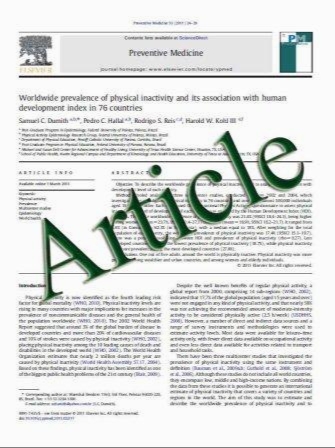Prognosis significance of focal signal intensity change on MRI after anterior decompression for single-level cervical spondylotic myelopathy
- نوع فایل : کتاب
- زبان : انگلیسی
- مؤلف : Peng Zhang Yong Shen Ying-Ze Zhang Wen-Yuan Ding
- چاپ و سال / کشور: 2011
Description
Objective The prognosis significance of signal intensity changes remains controversial, and several reports showed that focal-increased signal intensity is of little significance in prediction of the surgical outcome after the treatment of cervical spondylotic myelopathy (CSM). The purpose of this study was to investigate whether focal ISI can help assess the prognosis in patients with single-level CSM by means of measuring the ratio of T2/T1 signal intensity. Methods The participants in this study were 59 patients who underwent anterior cervical decompression and fusion for single-level CSM. MRI was performed in all the patients. The values of signal intensity of the spinal cord on T2WI and T1WI of sagittal view were respectively measured at the same level of the spinal cord and with similar area, and the ratio of signal intensity values of T2WI/T1WI (T2/T1 ratio) was then calculated. Patients were divided into 3 groups by hierarchical clustering analysis according to T2/T1 ratio. Compression rate, Japanese Orthopedic Association (JOA) scores, and recovery rate were compared among three groups. Results The range of T2/T1 ratio of 59 patients was from 1.26 to 2.85. Twenty patients were divided into group 1, 16 into group 2, and 23 into group 3. Significant difference was noted in age at surgery, duration of disease, recovery rate, and pre- and postoperative JOA scores (P\0.05) among three different groups. Spearman’s rank correlation showed that T2/T1 ratio was correlated with age at surgery, duration of disease, compression rate, pre- and postoperative JOA scores, and recovery rate (P\0.05). Stepwise regression analysis showed that the best combination of surgical outcome predictors included preoperative JOA score and duration of disease. Conclusion Patients with higher T2/T1 ratio tend to have relatively poor prognosis after surgical intervention. Focal spinal cord signal intensity change on T2-weighted MRI might be a predictor of a poor outcome in terms of functional recovery rate in patients underwent operations for single-level CSM.
Eur J Orthop Surg Traumatol DOI 10.1007/s00590-011-0844-4 Received: 23 May 2011 / Accepted: 16 July 2011


